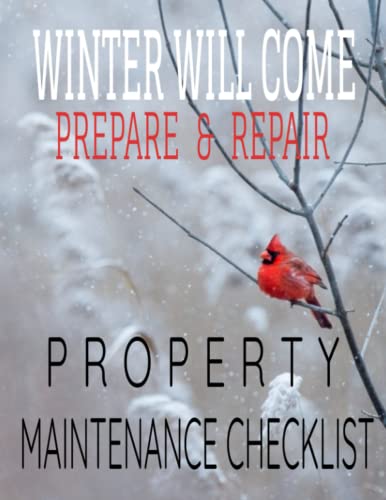As winter approaches, I start thinking about how to keep my outdoor spaces cozy and well-maintained despite the cold weather. It might seem overwhelming at first, but with a few key tasks, you can ensure your garden and patio stay in great shape all season long.

From clearing away fallen leaves and snow to protecting your plants and outdoor furniture, there are simple steps that make a big difference. I’ve gathered some of my favorite winter maintenance tips to help you prepare your outdoor areas, so you can enjoy a beautiful and stress-free winter.
Preparing Your Garden for Winter
Preparing your garden ensures plants survive the cold months. I take steps to safeguard my garden’s health during winter.
Protecting Plants from Frost
Cover sensitive plants with frost cloth or burlap when temperatures drop. I monitor forecasts and shield plants nightly if frost is expected. Container plants receive additional protection by moving them indoors or to sheltered areas. Applying a light layer of mulch helps insulate roots from freezing.
Mulching and Soil Preparation
Applying mulch retains soil moisture and regulates temperature. I spread 2–3 inches of organic mulch around plant bases. This practice prevents weed growth and enhances soil structure. Additionally, I test soil pH and adjust nutrient levels to support plant recovery in spring.
Maintaining Outdoor Structures
Proper maintenance of outdoor structures safeguards them against winter’s harsh conditions, extending their lifespan and functionality.
Inspecting and Repairing Decks and Patios
Inspect decks and patios for damaged boards, loose screws, and signs of wear. Clean surfaces to remove debris that can trap moisture, leading to rot or mold. Seal or stain wood to protect against moisture and temperature fluctuations. Tighten or replace hardware to ensure stability and safety during winter months.
Winterizing Sheds and Garages
Seal gaps and cracks in sheds and garages to prevent moisture intrusion and pest entry. Drain and store tools, equipment, and materials to avoid damage from freezing temperatures. Elevate items off the ground using shelves or hooks, reducing the risk of water damage and facilitating efficient use of space. Insulate doors and windows to maintain a stable interior environment, enhancing energy efficiency and protecting stored items.
Caring for Lawns and Grounds
Maintaining your lawn and grounds during winter ensures they remain healthy and vibrant come spring. I focus on effective snow removal and strategies to prevent ice and slush buildup.
Snow Removal Best Practices
Efficient snow removal protects your lawn and infrastructure from damage. I follow these best practices:
- Use the Right Tools: I prefer snow blowers for large areas and sturdy shovels for pathways to minimize strain and prevent turf damage.
- Clear Snow Promptly: Removing snow within a few hours of a snowfall reduces the risk of ice formation and moisture retention that can harm grass.
- Avoid Heavy Salt Use: Excessive salt can damage your lawn. I use eco-friendly de-icers sparingly to manage ice without harming vegetation.
- Alternate Clearing Paths: Shifting snow removal routes prevents soil compaction and allows grass to breathe during winter.
Preventing Ice and Slush Buildup
- Ensure Proper Drainage: I check and clear drainage systems to prevent water from pooling and freezing on your grounds.
- Use Mulch Strategically: Applying a layer of mulch around plants aids in insulation and reduces ice formation around the base of vegetation.
- Install Gutter Guards: Protecting gutters from ice buildup ensures consistent water flow and prevents overflow that can damage lawns and gardens.
- Apply Sand Sparingly: For traction on icy surfaces, I use sand instead of salt to reduce slipperiness without affecting plant health.
Storing Outdoor Furniture and Equipment
Proper storage protects your outdoor items from winter damage. I take steps to ensure everything remains in good condition until spring.
Cleaning and Covering Furniture
First, clean all furniture to remove dirt and debris. I use mild soap for metal parts and appropriate cleaners for wicker or plastic surfaces. After cleaning, I let items dry completely to prevent mold. Cover pieces with weather-resistant tarps or storage covers to shield them from snow and moisture. Storing cushions indoors preserves their shape and color.
Maintaining Tools and Machinery
Next, maintain tools and machinery to extend their lifespan. I drain fuel from power equipment to avoid freeze damage. Sharp tools receive oiling to prevent rust, while lawn mowers and trimmers are cleaned and stored in dry areas. Organizing tools in sheds or garages keeps them accessible and protected. Regular inspections ensure everything operates smoothly when spring arrives.
Conclusion
Preparing my outdoor space for winter has really paid off. It’s satisfying to see everything stay in good shape through the cold months. By taking these simple steps I’ve made sure my garden and patio remain beautiful and ready for spring. Plus keeping up with maintenance now saves me time and stress later on. I encourage you to give these tasks a try and enjoy a cozy and well-maintained outdoor area all winter long
















